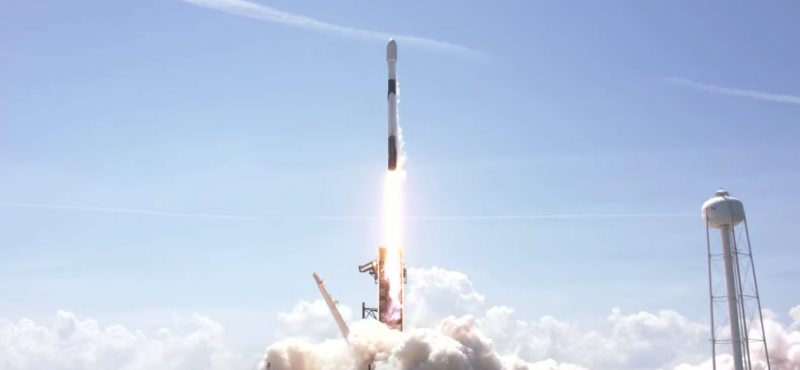Latest News

SpaceX launches 60 Starlink satellites on May 4. Screenshot via SpaceX.
SpaceX launched another batch of 60 Starlink satellites on Tuesday afternoon. A Falcon 9 rocket took off from Launch pad 39-A at the Kennedy Space Center at Cape Canaveral Florida at 3:01 p.m. ET.
The first stage was successfully recovered on a drone ship in the Atlantic Ocean, marking the ninth recovery for the booster. Then, the satellites were deployed one hour and four minutes after liftoff.
This was the 10th dedicated Starlink launch of 2021. SpaceX has kept up a rapid Starlink launch cadence in 2021, executing four Starlink launches in March, and two in April. With this successful launch, SpaceX has more than 1,400 satellites in Low-Earth Orbit (LEO).
Starlink is currently in beta testing that is available in parts of the United States, United Kingdom, Western Germany, and the south island of New Zealand.
SpaceX COO Gwynne Shotwell recently spoke to Via Satellite about the development of the system.
“We’ve got a team that is so dedicated to providing a great experience. Everyone working on Starlink has Starlink. They know when the system has trouble spots, and they’re dedicated to fixing it,” Shotwell said. “The network has to get better every day. We’re still stumbling and tripping and finding out new things about this system. But I’m confident that the system will be extraordinary. Then, it’s really left to the market. Is it something that the market wants and purchases? That’s the unknown, but given the response to date, it’s a pretty great product for those in rural areas.
This launch comes after SpaceX recently received permission from the FCC to lower the altitude of future satellites in the Starlink constellation. The FCC’s decision came despite protests from Viasat, Amazon, SES, and other satellite competitors. The commission decided that approving the modification was in the public interest because it will improve user experience in underserved polar regions.
Get the latest Via Satellite news!
Subscribe Now